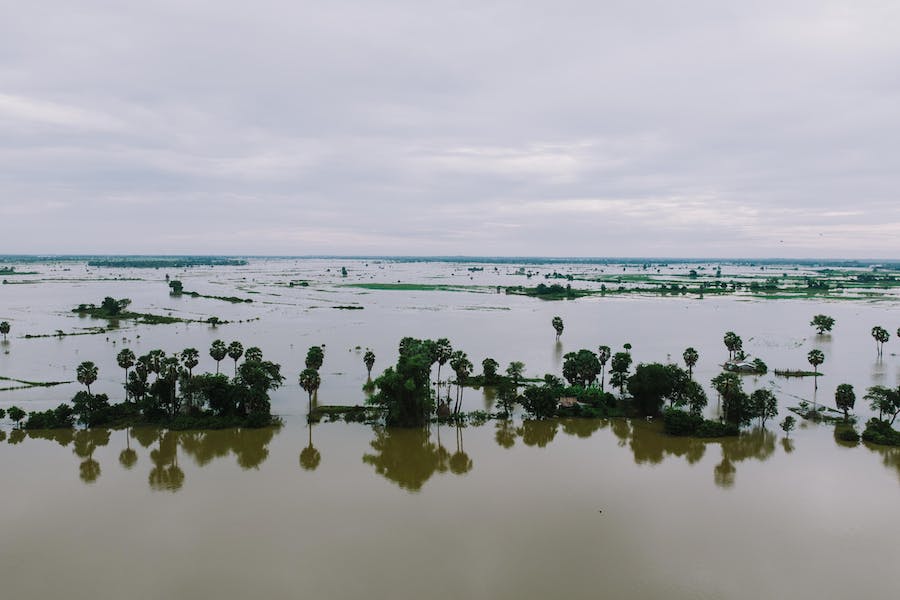Floods can strike any community when stormwaters overwhelm rivers and lakes, often with devastating impacts. But what if we told you that effective floodplain management can reduce these risks and minimize damage? With that in mind, this article focuses on what is floodplain management and the vital role environmental engineers play in planning and policy implementation!
Are you curious to know how we at Cypress map flood-prone zones and plan land use strategically to balance development needs with natural flood cycles? In the following, we explore this question, describe what floodplain management entails and why it’s so essential for resilience, and discuss structural and non-structural measures that can reduce vulnerability.
As we specialize in sustainable floodplain management strategies, our commitment is to illuminate the path toward sustainable coexistence with these ever-shifting landscapes. Let’s unpack the significance of floodplain management and decipher the balance between harnessing the potential of these areas and safeguarding against the risks they pose!

What Is Floodplain Management?
Floodplain management is a strategic and interdisciplinary approach aimed at reducing the risk and impact of flooding on communities and ecosystems. It involves a combination of engineering, planning, and regulatory measures to enhance resilience and sustainability.
The primary goal is to strike a balance between human development and the natural functions of floodplains, considering factors such as floodplain mapping, zoning, and hydraulic modeling.
At Cypress, our engineers play a crucial role in designing effective flood control measures, while regulations and land-use planning contribute to minimizing vulnerability.
Components of Floodplain Management
Floodplain mapping and identification
Floodplain mapping is a cornerstone in floodplain management. At Cypress, it serves as a vital tool to identify high-risk areas and determine flood hazards accurately.
By employing advanced technologies and accurate data, our floodplain managers can develop comprehensive maps that guide effective decision-making and risk-reduction strategies.
Floodplain regulations and zoning
The implementation of stringent regulations and zoning ordinances is crucial in directing land use and development activities in flood-prone areas. These measures help us mitigate potential damages by controlling construction in vulnerable zones. This way, we ensure that new developments adhere to safety guidelines and contribute to overall floodplain resilience.
Flood warning systems and emergency preparedness
Early warning systems play a pivotal role in enhancing public safety during flood events. By emphasizing the importance of timely alerts and fostering comprehensive emergency response plans, floodplain management aims to minimize the impact of floods and safeguard communities.
Flood mitigation measures
Recognizing the importance of natural floodplain functions is key to effective flood mitigation. Wetland preservation and floodplain restoration strategies contribute to the natural buffering capacity of these areas. It also helps with absorbing excess water and reducing the severity of flooding events.
Public awareness and education
The role of public education cannot be overstated in floodplain management. Raising awareness about flood risks, preparedness measures, and appropriate responses is very important. It ensures that communities are informed.
It also ensures they actively participate in safeguarding themselves against potential flood hazards. Public engagement is the bedrock for building resilient communities in the face of flood events.

Role of Engineers in Floodplain Management
Responsibilities and expertise
Our engineers at Cypress play a pivotal role in floodplain management, leveraging their specialized expertise to address various challenges. They undertake comprehensive floodplain analysis, hydraulic modeling, and the design of effective flood control infrastructure.
By employing cutting-edge technologies, our engineers contribute to accurate floodplain mapping, ensuring that communities have reliable data for informed decision-making.
Additionally, they are instrumental in developing and implementing flood mitigation strategies, ranging from levees and dams to stormwater management systems.
Tackling challenges in sustainable development
The significance of engineers in floodplain management extends to fostering sustainable development practices. By integrating flood risk considerations into urban planning and infrastructure design, engineers contribute to the creation of resilient communities.
Their expertise helps strike a balance between economic development and environmental preservation, ensuring that communities thrive while remaining resilient to potential flood hazards.
In essence, engineers play a critical role in building a sustainable future by addressing the challenges posed by floods and safeguarding communities from their detrimental impacts.
Case Studies in Floodplain Management
Successful implementations
In the aftermath of the extreme flooding in the Big Thompson River basins in 2013, the community rallied to implement a comprehensive floodplain management strategy.
Key successes included the rapid reconstruction of critical infrastructure like US 34 and CR 43 and the formation of grassroots initiatives like the Big Thompson River Restoration Coalition (BTRRC).
The BTRRC, in collaboration with Wildlands Restoration Volunteers, secured funding for the Big Thompson River Restoration Master Plan, showcasing the community’s resilience.
This case study underscores the significance of swift emergency responses, strategic partnerships, and community-driven restoration efforts as pillars of successful floodplain management.
The implementation of a holistic recovery vision, encompassing ecological rehabilitation, infrastructure protection, and risk reduction, became a model for sustainable floodplain management.
Lessons learned
The Big Thompson River Restoration project offers valuable lessons for effective floodplain management. First and foremost is the importance of community engagement and collaboration. Grassroots organizations, public agencies, and non-profit organizations working together demonstrated the power of a united front.
Additionally, the case study emphasizes the need for a long-term vision beyond immediate recovery. The creation of a master plan ensured that restoration efforts were not just reactive but aimed at building a more resilient river system capable of withstanding future challenges.
The successful integration of disaster risk reduction and sustainability measures serves as a beacon for other communities facing similar threats. This case study stands as a testament to the enduring benefits of proactive floodplain management, providing inspiration and insights for engineering students and professionals alike.

Conclusion
Not only have we explained what is floodplain management, but we’ve explored the ins and outs of effective floodplain management. From identifying flood-prone areas to using smart strategies like levees and natural fixes such as wetland restoration, floodplain management is like a safety net against expensive flood damage.
This peek into the world of floodplain management highlights how it not only protects neighborhoods but also revives the natural functions of rivers.
Though it might seem a bit complex, the main goal is straightforward – to build resilience against floods through smart land planning and being ready ahead of time. By taking these steps, communities facing flood risks can pave the way for a safer and more secure future.
